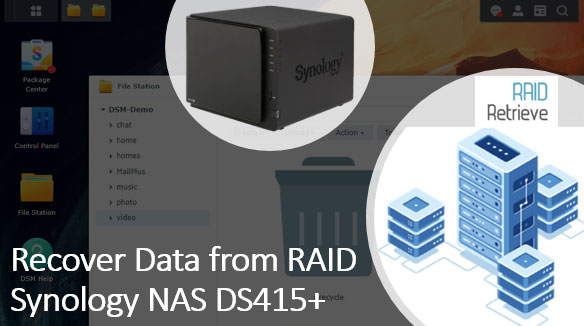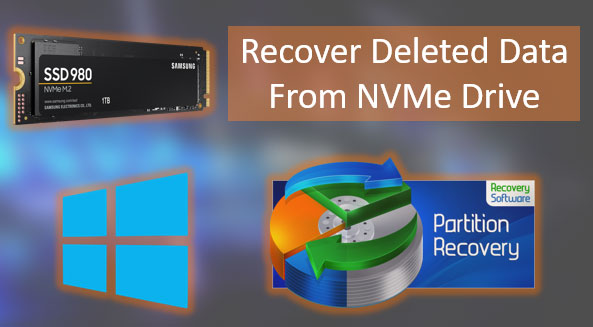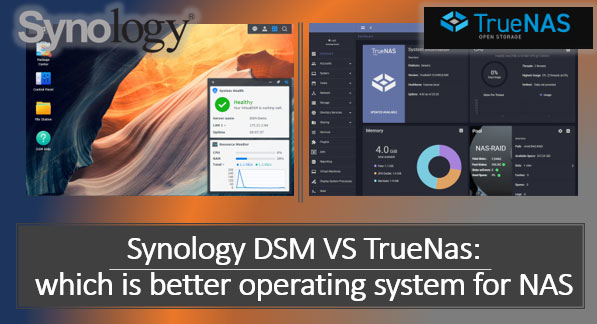A specialized operating system TrueNAS is one of the best solutions to manage DIY NAS storage systems. However, it also has some downsides – for example, the data recovery process from a TrueNAS storage can be really complicated. Also, some data recovery tools don’t work with TrueNAS and its specific RAID arrays. Keep on reading for a review of popular data recovery products, and you’ll see which of them are really good of TrueNAS. In the process, we’ll find out how to recover data from TrueNAS-based NAS storage properly.
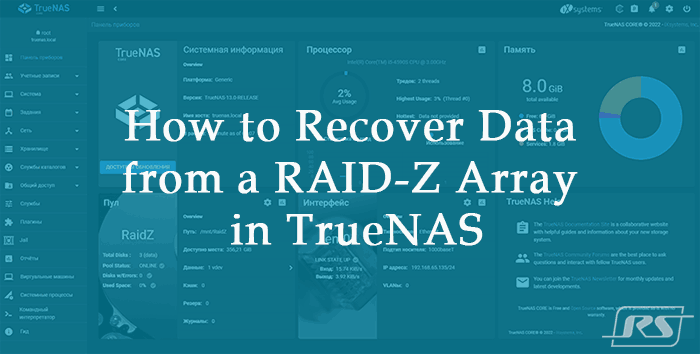
Contents
- Peculiarities of data recovery on TrueNAS
- RS RAID Retrieve
- UFS Explorer RAID
- DiskInternals RAID Recovery
- EaseUS Data Recovery
- Stellar Data Recovery Technician
- R-Studio Technician
- Zero Assumption Recovery
- Conclusions
Peculiarities of data recovery on TrueNAS
Talking of NAS, you can make a DIY NAS, install an operating system, and configure it.
No matter what kind of NAS you use, you may have to recover its data. This data may be deleted accidentally by the main user, by other users or viruses. Sometimes, a RAID may get out of order, fail to be identified, or even fail to be recovered with the means of the NAS operating system and so on.
Data can be recovered from NAS by disconnecting the hard disks from the NAS device and connecting them to a PC. After that, a data recovery tool should be opened. RAID NAS should be selected as the location to search for deleted data. The recovery tool scans this location, and if it finds any information available for recovery, you can do it.
However, TrueNAS has certain peculiarities. This operating system is unique and one of its features is that it uses a high-performance file system, ZFS. Together with conventional RAID 0 and RAID 1 configurations, it also enables you to create specific RAID types — RAID-Z and RAID-Z2.
These are improved equivalents of RAID 5 and RAID 6. In cases when RAID-Z or RAID-Z2 is used, recovering data may be more difficult.
ZFS has a sophisticated structure of data storage. The file system “knows” how RAID-Z and RAID-Z2 arrays are built, and the data recovery tool must be able to identify them, because it is impossible to set such a configuration manually in the recovery tool settings. If the tool can’t identify RAID-Z and RAID-Z2, it won’t be able to scan the disks for data, and it will be impossible to recover it.
Out of all variety of different data recovery tools for RAID, we’ll be limited to use only the following products since we have to deal with a NAS system running TrueNAS:
- those supporting ZFS (because there a lot of tools that don’t support it);
- and those able to identify RAID-Z, RAID-Z2 if they are used.
So what popular products can handle data recovery from TrueNAS and, in particular, from RAID-Z and RAID-Z2? Which of them are better than others? And how can we recover data from TrueNAS?
RS RAID Retrieve
RS RAID Retrieve is a narrowly specialized data recovery tool designed specifically for RAID arrays, especially those used in NAS devices. It has effective data recovery algorithms, doesn’t require an original RAID controller, and it doesn’t need rebuilding or reconfiguring an existing RAID. This tool can identify arrays on its own, and features two scan modes, quick scan and a full scan, with an in-depth search to find and recover all data.
It supports numerous RAID configuration types — 0, 1, 4, 5, 6, 1E, 5E, 5EE, 01, 10, 50, 60 etc., and works with almost every file system – NTFS, ReFS, FAT, exFAT, APFS, HFS+, Ext 2/3/4, XFS, ReiserFS, UFS 1/2, ZFS. This tool can identify RAID-Z and RAID-Z2, find and recover their data. It does so not only in full scan mode, but even after a quick scan.

Data recovery from damaged RAID arrays
In the program’s window, we can see that it has identified the RAID with ZFS file system, that is, one working on TrueNAS operating system.
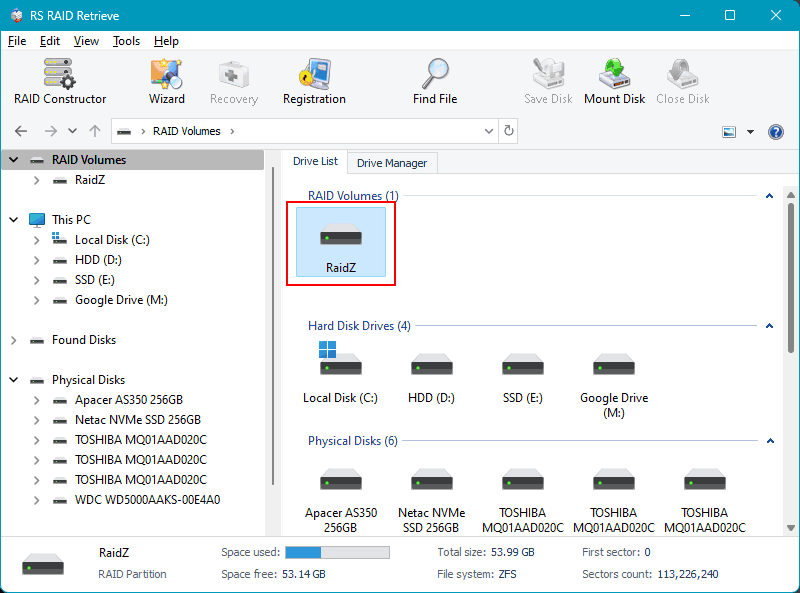
In the context menu, click on Properties
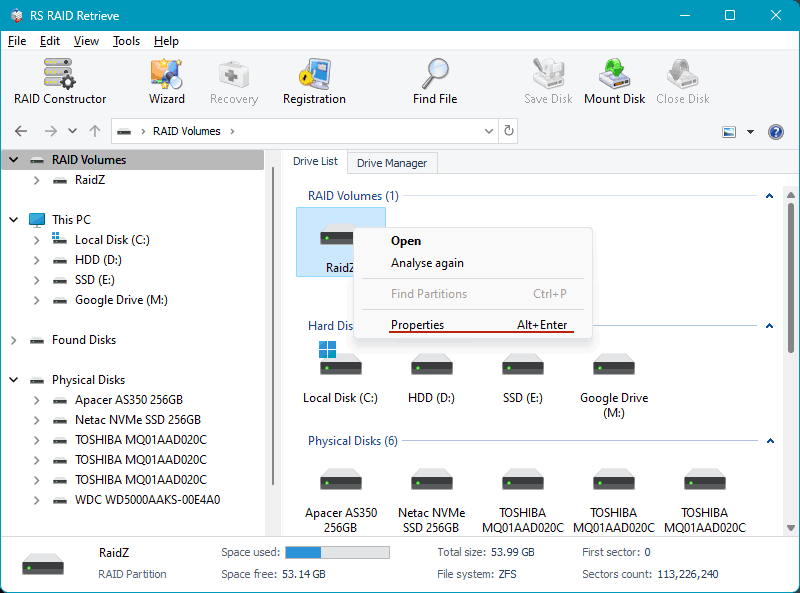
to see what hard disks of this array are identified and if all of the available disks are displayed.
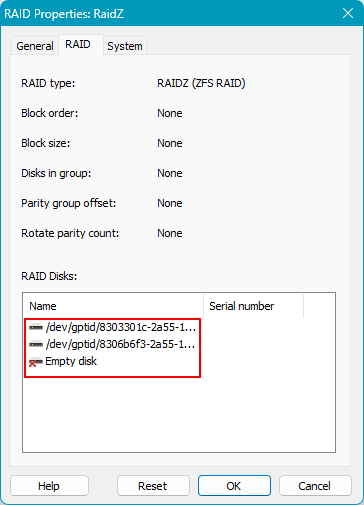
Now just double-click on the TrueNAS RAID. In the file recovery wizard window that opens, you can choose Fast scan first – it may find the required data. If it doesn’t happen, go for Full analysis.
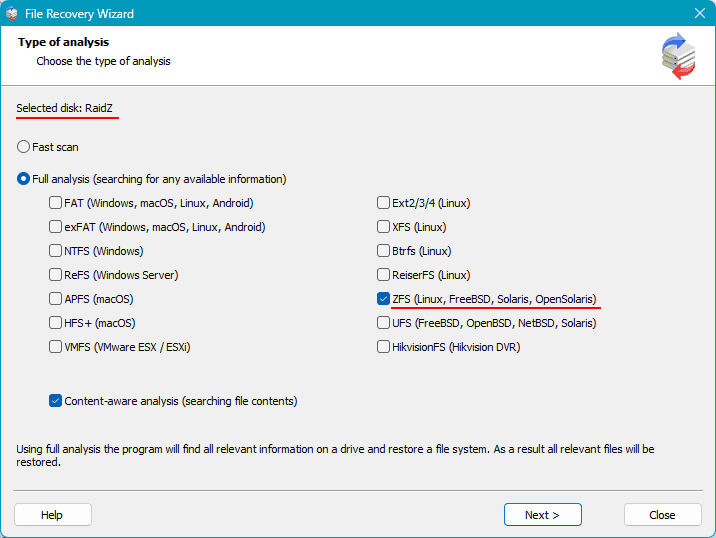
After the scan finds the data, search its structure for the specific things you need. Choose a file (or several of them) and click Recovery.
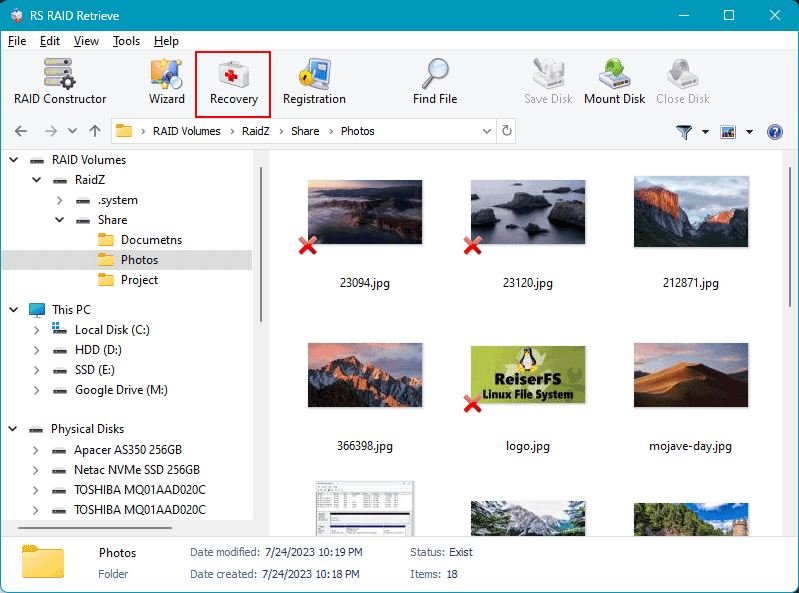
Select how to save the recovered data.
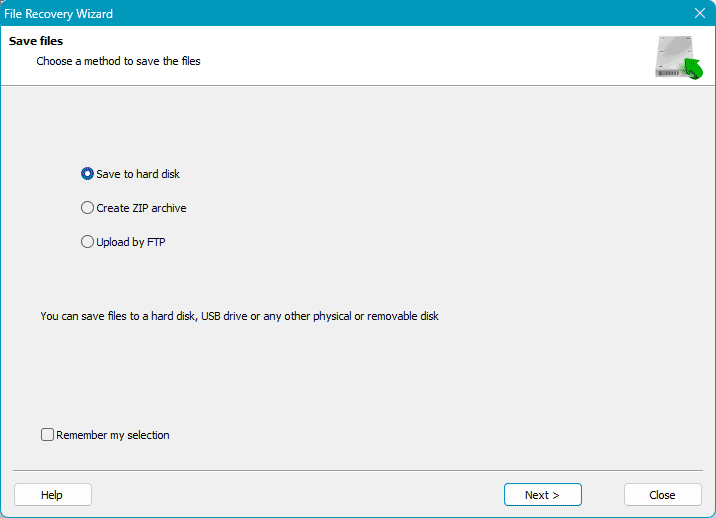
If this is a disk on your computer, give the path to it,
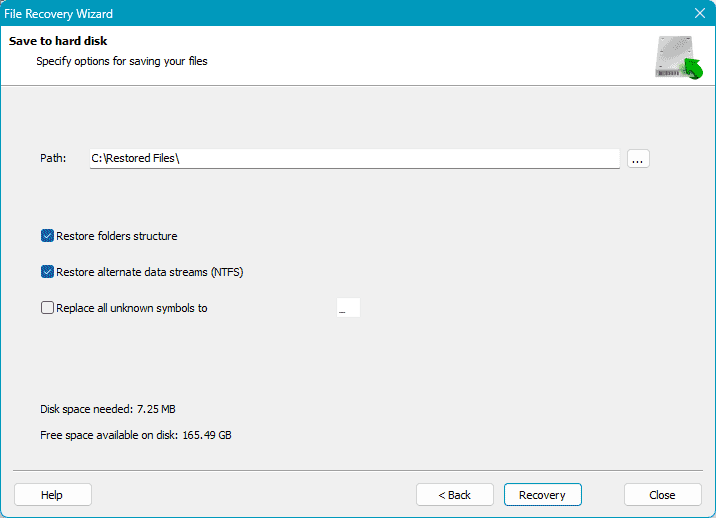
and find the recovered data in that directory.
UFS Explorer RAID
UFS Explorer RAID is the second narrowly specialized data recovery tool designed specifically for RAID arrays, including those used in NAS devices. This tool can identify arrays on its own, doesn’t require an original RAID controller, and it doesn’t need rebuilding or reconfiguring an existing RAID. It features five types of scanning to find data available for recovery. This tool supports RAID 0, 1E, 3, 5, 6, 7, 10, 50, 60, 50E configurations, and can work with such file systems as NTFS, ReFS, FAT, exFAT, APFS, HFS+, Ext 2/3/4, XFS, JFS, ReiserFS, UFS, Btrfs, ZFS.
It also has a few special functions. And it can identify RAID-Z and RAID-Z2.
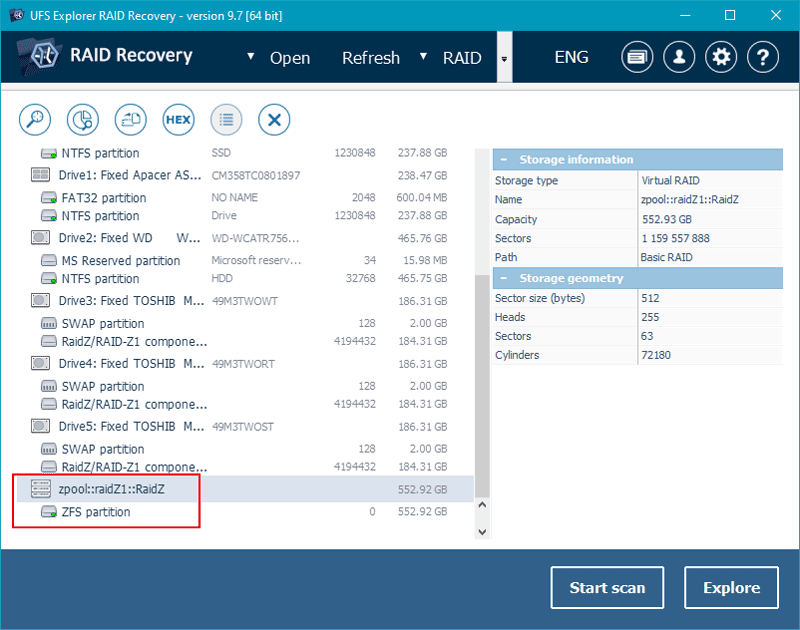
This product is able to find data and recover it.
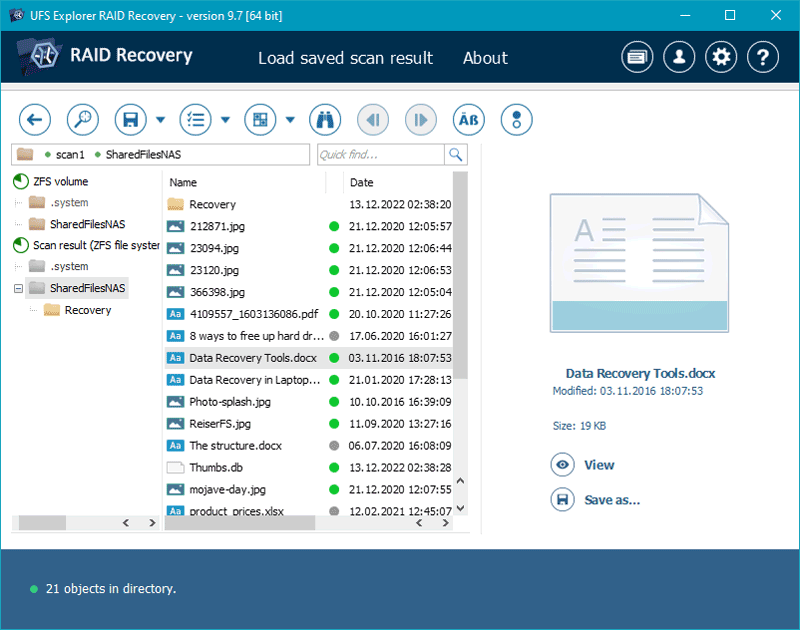
DiskInternals RAID Recovery
DiskInternals Raid Recovery is one more narrowly specialized data recovery tool designed for RAID arrays and NAS devices. This tool requires an additional RAID controller for hardware-based arrays and features two scan modes, quick scan and a full scan with an in-depth search to find and recover data. It works with such RAID configurations as 0, 1, 0+1, 1+0, 1E, 4, 5, 50, 5EE, 5R, 6, 60, JBOD and supports NTFS, ReFS, FAT, exFAT, APFS, HFS+, Ext 2/3/4, XFS, JFS, ReiserFS, UFS, ZFS file systems, and it can identify RAID-Z and RAID-Z2.
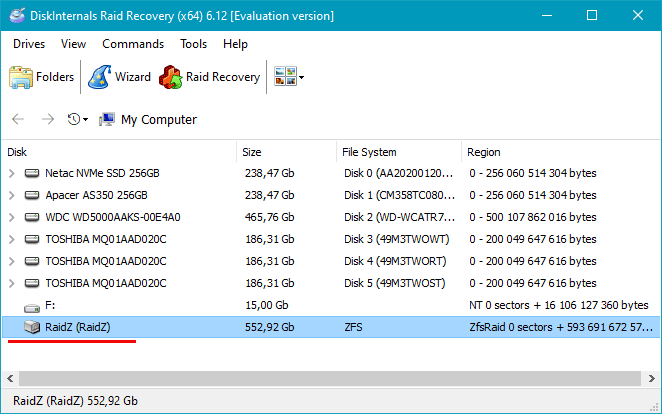
But somehow, it can’t find the data for recovery. It shows that the array is empty while other products find some data there.
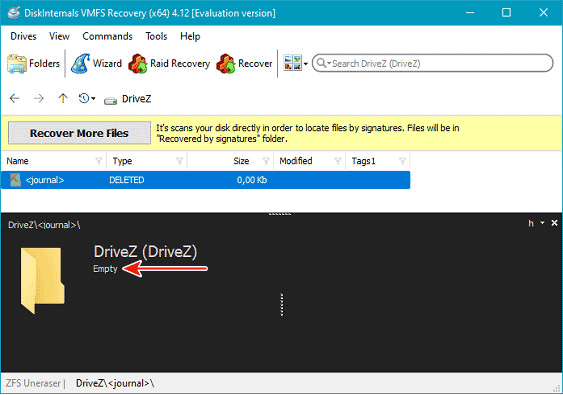
EaseUS Data Recovery
EaseUS Data Recovery is an integrated tool designed to recover data from various media. It supports such file systems as NTFS, ReFS, FAT, exFAT, HFS+, Ext 2/3, Btrfs. It has a feature to recover NAS data directly from the storage device without having to connect the disks to the computer, but it is only available for RAID 0 and RAID1. The tool includes a quick scan and a full scan with an in-depth search to find and recover data.
However, it doesn’t work with ZFS file system, and fails to identify RAID-Z and RAID-Z2. Data cannot be recovered.
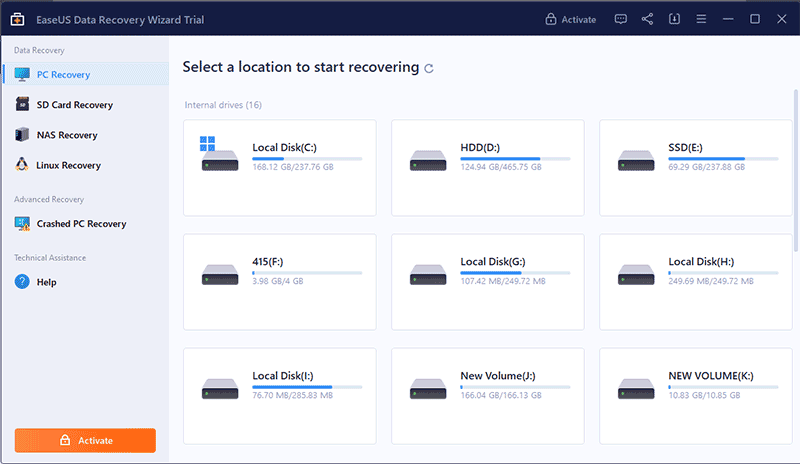
Stellar Data Recovery Technician
Stellar Data Recovery Technician is an integrated tool designed to recover data from various media. It is compatible with NTFS, FAT, exFAT file systems and supports RAID 0, 5, 6. It doesn’t require an original RAID controller, and it doesn’t need rebuilding or reconfiguring an existing RAID. However, this product can’t identify the RAID configuration and requires the user to specify it.
Also, it doesn’t work with ZFS file system, and fails to identify RAID-Z and RAID-Z2. Data cannot be recovered.
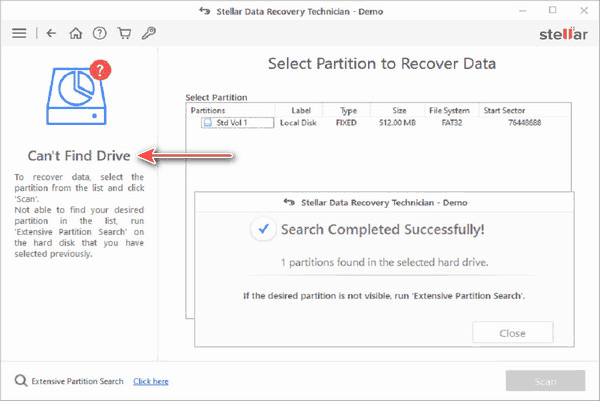
R-Studio Technician
R-Studio Technician is an integrated tool designed to recover data from various media. It has a feature to recover data remotely, over the network. This tool works with such file systems as NTFS, NTFS5, ReFS/ReFS2+, FAT, exFAT, APFS, HFS, HFS+, HFSX, Ext 2/3/4, UFS1, UFS2, UFS BigEndian, and supports RAID 4, 5, 6. This tool can identify arrays on its own, but it doesn’t work with ZFS file system, and fails to identify RAID-Z and RAID-Z2. Data cannot be recovered.
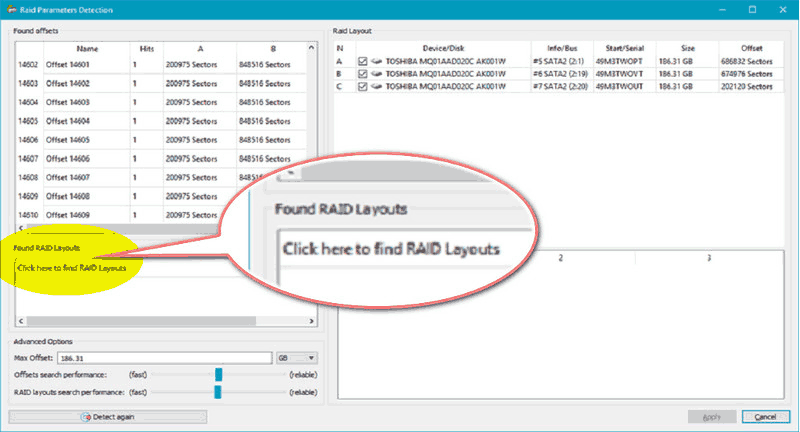
Zero Assumption Recovery
Zero Assumption Recovery is an all-inclusive application to recover data from various media. It is compatible with NTFS, FAT, Ext 2/3/4, XFS file systems, and supports RAID 0, 1, 10, 01. It can identify software RAID systems on NAS devices. However, configuration should be specified for hardware RAID.
It doesn’t work with ZFS file system, and recognizes RAID-Z and RAID-Z2 as RAID 1, i.e., it identifies them incorrectly. Data cannot be recovered.
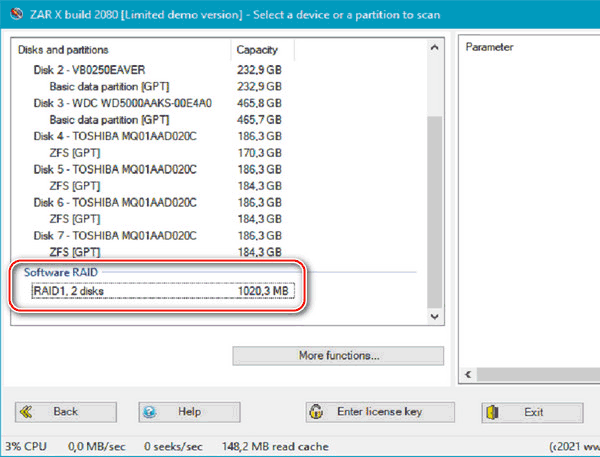
Conclusions
That’s how it is — all the tools we have reviewed today can’t help you if you ever need to recover data from a NAS system on TrueNAS. They don’t work with ZFS file system and specific array types like RAID-Z, RAID-Z2.
This doesn’t concern TrueNAS, but among others we could distinguish EaseUS Data Recovery for having the direct recovery option from NAS, even though it is only available for a limited list of RAID configurations. However, it is still more effective to connect the hard disks to a PC.
As to data recovery from TrueNAS, we have only found two products capable of helping us – and these are the tools designed with RAID in mind: UFS Explorer RAID and RS RAID Retrieve. Both of them are effective, but RS RAID Retrieve has a considerable advantage of better usability.
Also, the interface of RS RAID Retrieve is similar to that of Windows File Explorer, and this makes it familiar for many users and easier to navigate. You won’t have to learn how to work with this tool – just take it and use it.






